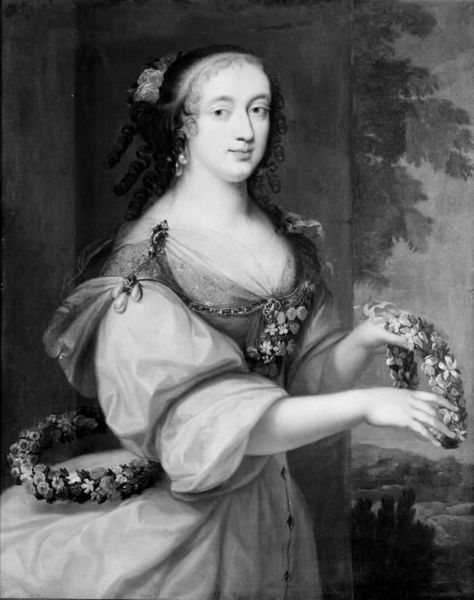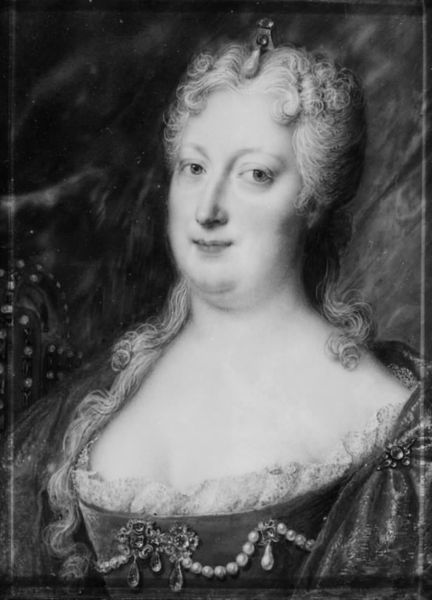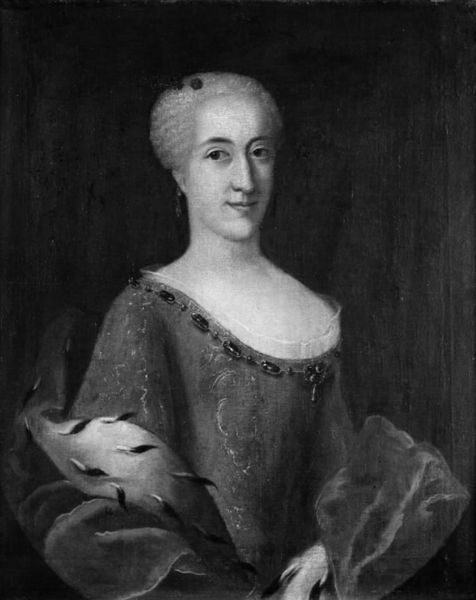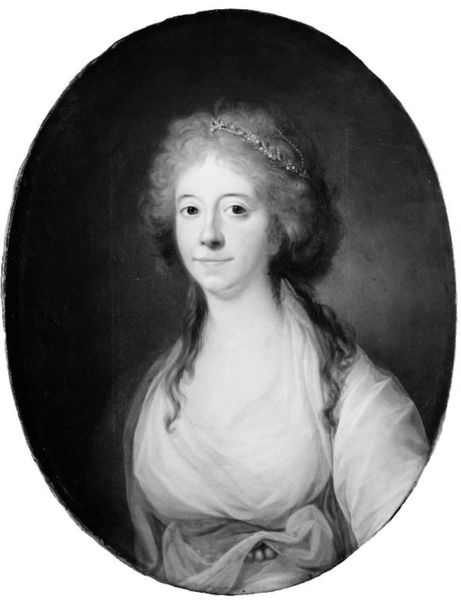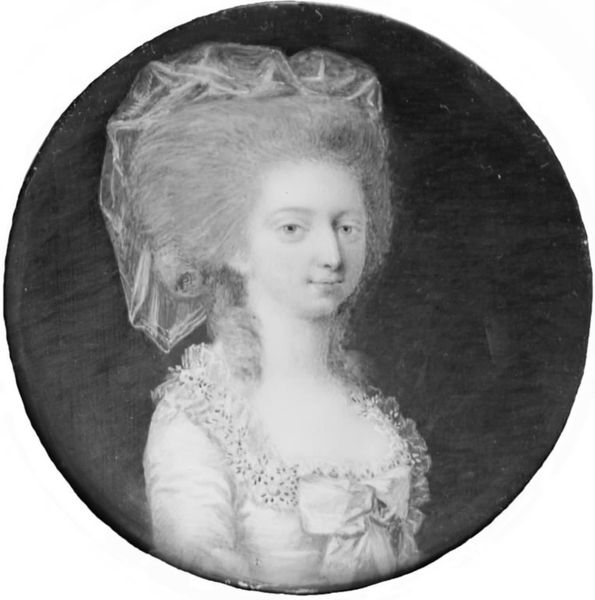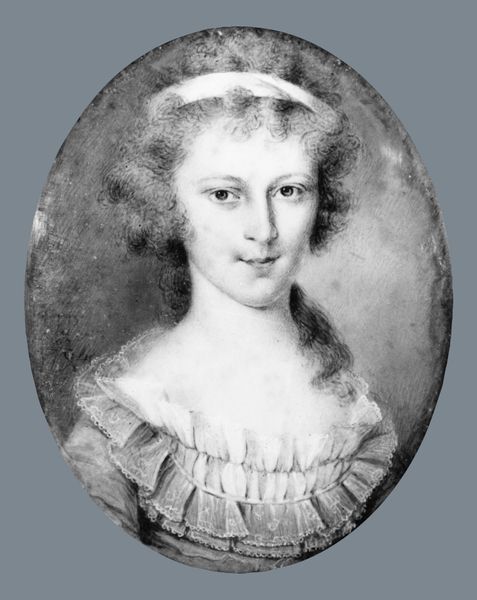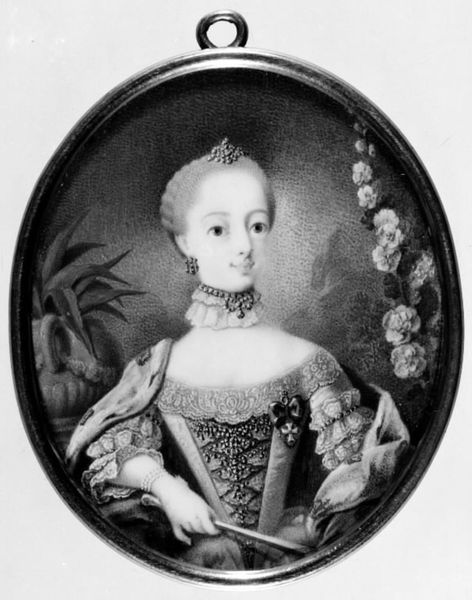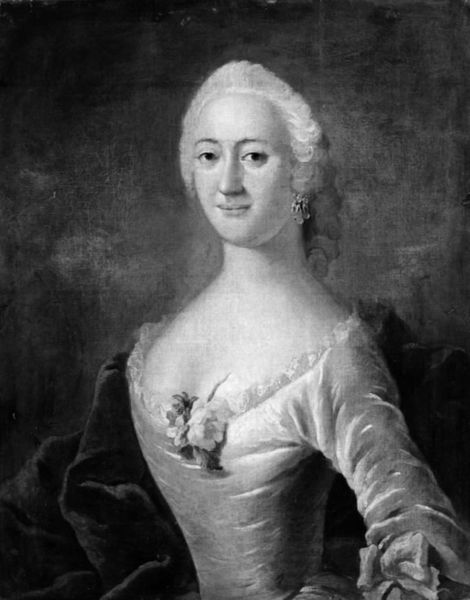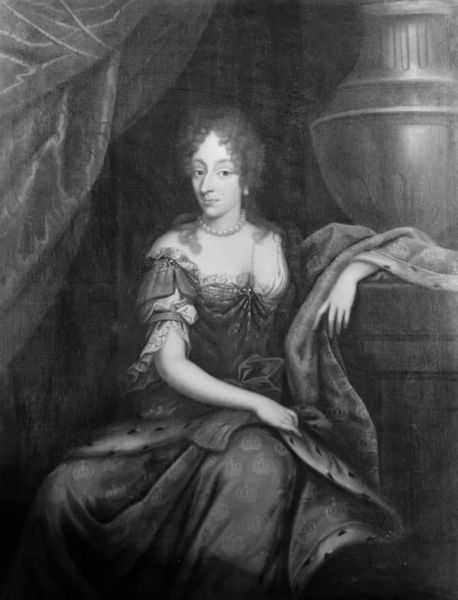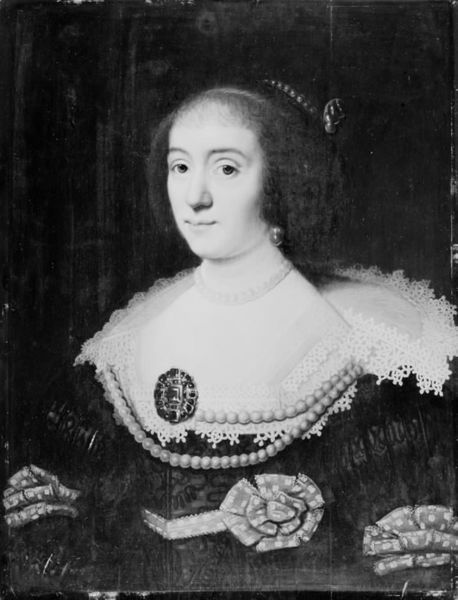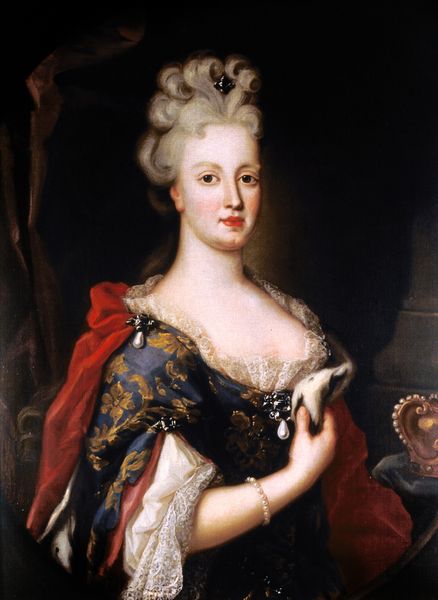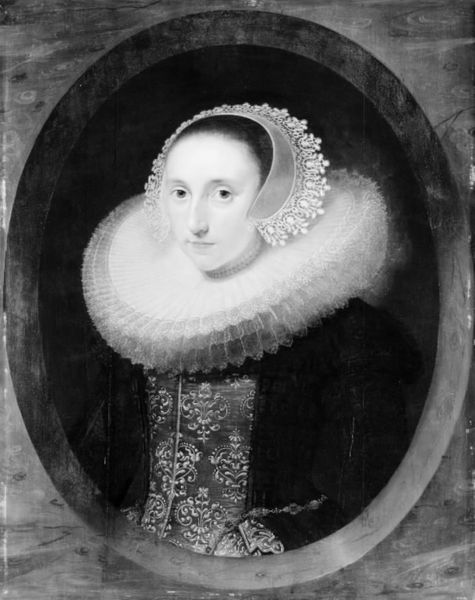
painting, ivory
#
portrait
#
baroque
#
black and white photography
#
painting
#
black and white
#
history-painting
#
academic-art
#
monochrome
#
ivory
#
monochrome
Dimensions: 9.4 cm (height) x 6.9 cm (width) (Netto)
Editor: This is Andreas Möller's "The Archduchess Maria Anna," painted in 1727, an ivory painting now housed in the SMK. The monochrome palette gives it a certain old-world gravity, but I’m curious – what's the story behind portraits like these? Curator: Well, portraits like this were far more than simple likenesses. In the Baroque era, especially for members of royal families, these served as crucial tools of political power. Consider Maria Anna here – the portrait communicates dynastic strength and legitimacy. Think about where such an image might be displayed and its function in cementing her place within the ruling hierarchy. Editor: So it's not just about appearance; it’s about sending a message? What aspects specifically point to that? Curator: Exactly! Note the luxurious dress and jewellery, indicative of her wealth and status. The formal pose and slightly idealized features enhance the sense of authority. Moreover, commissioning an artist like Möller also spoke to the family’s patronage of the arts. Every detail was deliberate. Do you think the painting would have been received differently in different political contexts? Editor: Definitely. In times of unrest, such displays could be seen as insensitive or even provocative. Curator: Precisely. And after a period of regime change or revolution? Such objects would lose their value, perhaps being repurposed or simply forgotten. Editor: I never thought about portraiture as such a direct form of political communication before. It really highlights the connection between art and power! Curator: Indeed. Examining art through this lens unveils fascinating social and political dynamics that otherwise may remain hidden.
Comments
No comments
Be the first to comment and join the conversation on the ultimate creative platform.

